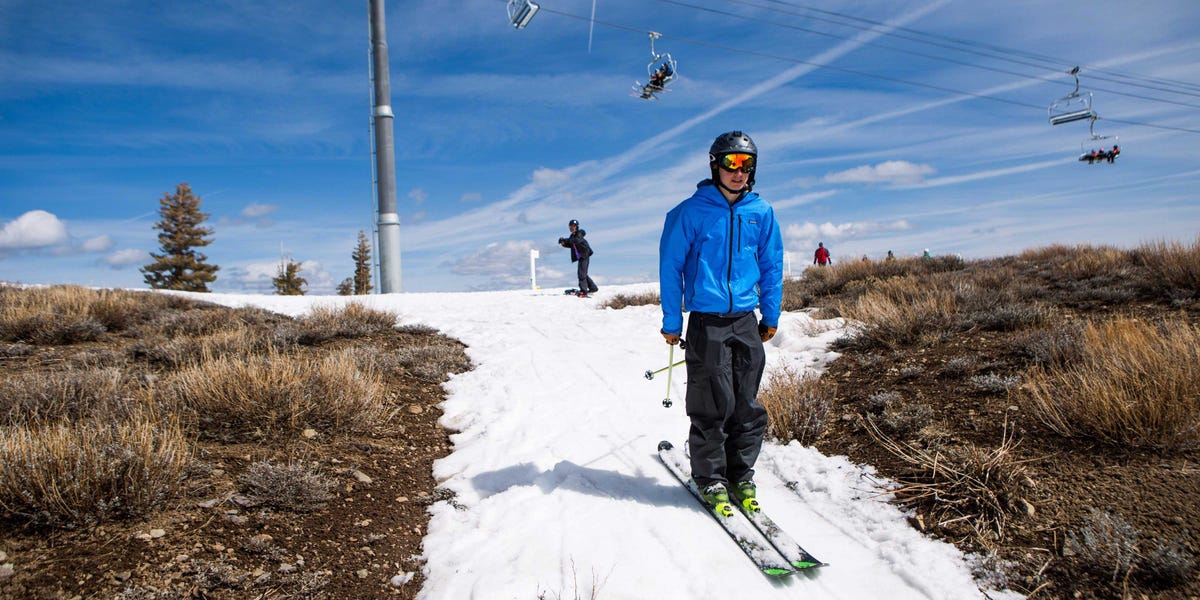
After a very snowy December, the Western US has had a miserable January in comparison. Nearly every water basin in the West was below average for snowfall in January, so where is the snow?
Summary:
January was simply atrocious for snow all across the West. Unfortunately, early February doesn’t look too much better. However, during the second week of February, it looks like things will switch up and flakes will begin falling once again in the latter half of the month and continuing through early March.
January: what happened?
January’s pattern was fairly similar to that of November, which also saw dismal snow totals across the Western US. However, January was arguably worse, since rather than just being warm and wet, it was just warm and dry.
Let’s take a look at the main culprit, the formidable “omega block”:

As a rough rule of thumb, winds and storms will travel parallel to (with) the black contours. Immediately, you can see why the western US has been so dry. All the tropical moisture and storm energy has been steering around the omega block (named this because it resembles the Greek letter omega: Ω). This means it’s largely been going around the PNW to the north, all the way up into Alaska. Where the height contours begin to trend back to the southeast, the moisture, cold air, and storminess take a dive into the Eastern US, which explains the impressively cold and stormy winter weather they’ve seen during January.
Looking ahead: when will it snow?
The first week or two of February looks very similar to January, with a resilient high-pressure system blocking any major storm systems from reaching the west coast. However, the second week of February is where things catch my eye and where I believe the pattern will flip and allow snow enthusiasts to rejoice once again.
First, let’s start with teleconnections, which can give a really good idea of storm timing and intensity. If you don’t know what teleconnections are, go take a look at the article linked below:
The first thing I like to look at is the arctic oscillation (AO). It gives me a good idea of storm timing and (sometimes) intensity. Below is the current American ensemble AO forecast.

A few things to note here. First of all, the AO is entering an increasingly positive phase during the second half of February and into early March. This should bring a more consistent jet-stream further south, which will allow colder, more consistent storms, especially in the Pacific Northwest.
Perhaps more important is the PNA (Pacific North American oscillation). The PNA gives us a very good idea of where cold, stormy conditions might form. A rough rule of thumb is that a positive PNA will bring below-average temperatures to the East (warmer in the West) and a negative PNA will bring below-average temps to the West (warmer in the East). In an over-simplified nutshell, the arctic oscillation tells us how extreme things will be (whether that be warm or cold) and the PNA tells us where those extremes will be.
Throughout most of January, the PNA has stayed between average and above average. However, all of the global ensembles agree that the PNA will take a negative dive back to below-average conditions sometime around the 10th and remain there through the end of the month or longer. The PNA doesn’t guarantee snow, but it forces the AO’s hand and increases its propensity to place a persistent trough over the west; great news for snow!
It’s far too early to pin down specifics for the end of the month, but it’s certainly encouraging to know that relief is hopefully on the way! Stay tuned for future regional forecasts from SnowBrains, and FINGERS CROSSED FOR SNOW!

Good catch, thanks!
I recommend you read over a synopsis of the Artic Oscillation once more. Your perspective appears to be inverted.